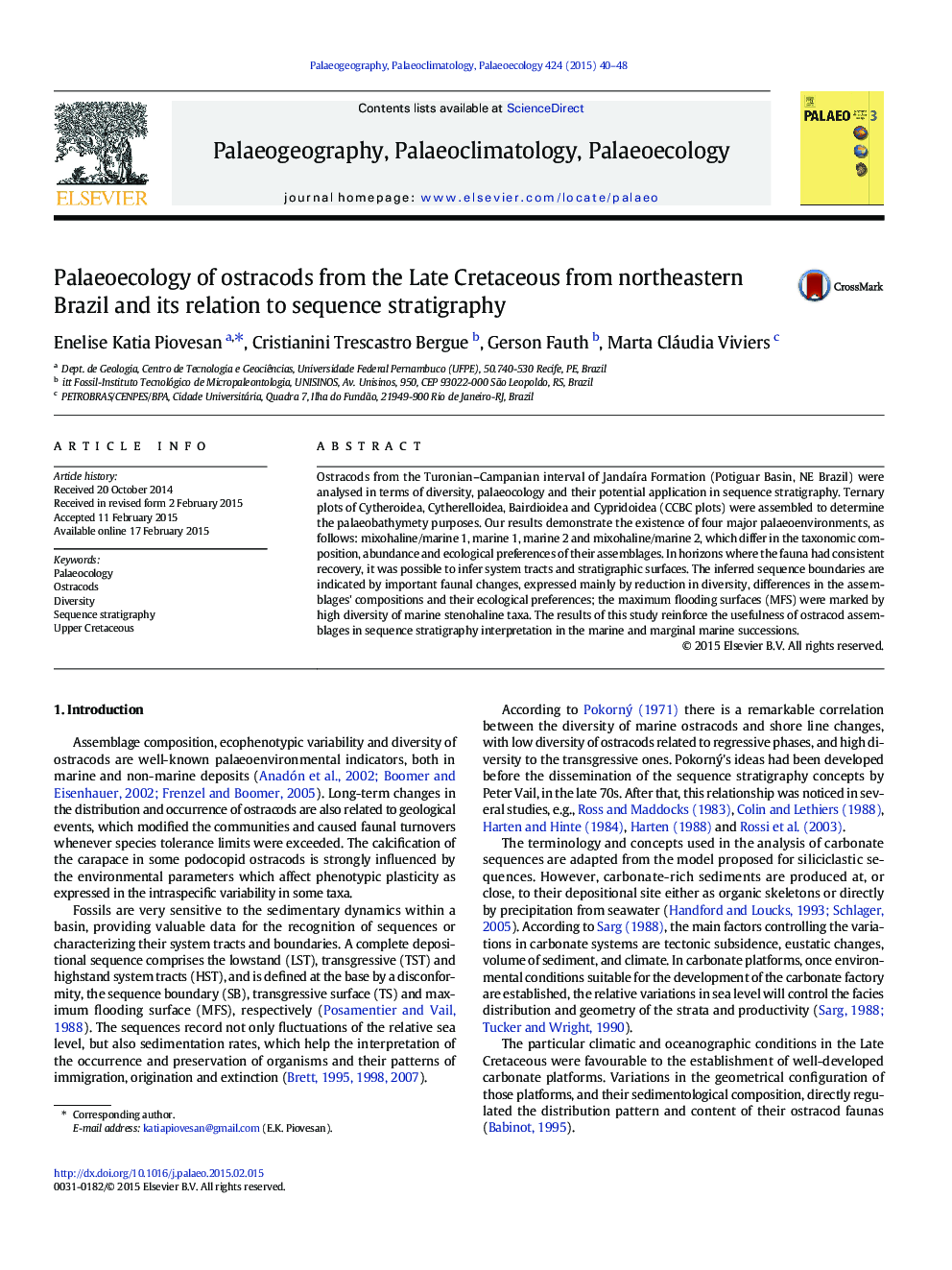| Article ID | Journal | Published Year | Pages | File Type |
|---|---|---|---|---|
| 6349756 | Palaeogeography, Palaeoclimatology, Palaeoecology | 2015 | 9 Pages |
Abstract
Ostracods from the Turonian-Campanian interval of JandaÃra Formation (Potiguar Basin, NE Brazil) were analysed in terms of diversity, palaeocology and their potential application in sequence stratigraphy. Ternary plots of Cytheroidea, Cytherelloidea, Bairdioidea and Cypridoidea (CCBC plots) were assembled to determine the palaeobathymety purposes. Our results demonstrate the existence of four major palaeoenvironments, as follows: mixohaline/marine 1, marine 1, marine 2 and mixohaline/marine 2, which differ in the taxonomic composition, abundance and ecological preferences of their assemblages. In horizons where the fauna had consistent recovery, it was possible to infer system tracts and stratigraphic surfaces. The inferred sequence boundaries are indicated by important faunal changes, expressed mainly by reduction in diversity, differences in the assemblages' compositions and their ecological preferences; the maximum flooding surfaces (MFS) were marked by high diversity of marine stenohaline taxa. The results of this study reinforce the usefulness of ostracod assemblages in sequence stratigraphy interpretation in the marine and marginal marine successions.
Related Topics
Physical Sciences and Engineering
Earth and Planetary Sciences
Earth-Surface Processes
Authors
Enelise Katia Piovesan, Cristianini Trescastro Bergue, Gerson Fauth, Marta Cláudia Viviers,
